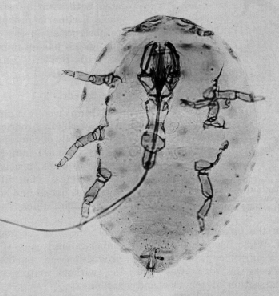|
Aphrastasia
''Aphrastasia'' is a genus of true bugs belonging to the family Adelgidae. The genus is monotypic, with the only species being ''Aphrastasia funitecta''. The genus was first described by Börner in 1909. References Adelgidae {{sternorrhyncha-stub ... [...More Info...] [...Related Items...] OR: [Wikipedia] [Google] [Baidu] |
Adelgidae
The Adelgidae are a small family of the Hemiptera closely related to the aphids, and often included in the Aphidoidea with the Phylloxeridae or placed within the superfamily Phylloxeroidea as a sister of the Aphidoidea within the infraorder Aphidomorpha. The family is composed of species associated with pine, spruce, or other conifers, known respectively as "pine aphids" or "spruce aphids". This family includes the former family Chermesidae, or "Chermidae", the name of which was declared invalid by the ICZN in 1955. There is still considerable debate as to the number of genera within the family, and the classification is still unstable and inconsistent among competing authors. There are about fifty species of adelgids known. All of them are native to the northern hemisphere, although some have been introduced to the southern hemisphere as invasive species. Unlike aphids, the adelgids have no tail-like cauda and no cornicles.''Bugs of the World'', George C. McGumoFacts on ... [...More Info...] [...Related Items...] OR: [Wikipedia] [Google] [Baidu] |
True Bugs
Hemiptera (; ) is an order (biology), order of insects, commonly called true bugs, comprising more than 80,000 species within groups such as the cicadas, aphids, planthoppers, leafhoppers, assassin bugs, Cimex, bed bugs, and shield bugs. They range in size from to around , and share a common arrangement of piercing-sucking Insect mouthparts, mouthparts. The name "true bugs" is sometimes limited to the suborder Heteroptera. Entomologists reserve the term ''bug'' for Hemiptera or Heteroptera,Gilbert Waldbauer. ''The Handy Bug Answer Book.'' Visible Ink, 1998p. 1. which does not include other arthropods or insects of other orders such as ants, bees, beetles, or butterflies. In some varieties of English, all Terrestrial animal, terrestrial arthropods (including non-insect arachnids and myriapods) also fall under the colloquial understanding of ''bug''. Many insects with "bug" in their common name, especially in American English, belong to other orders; for example, the lovebug is ... [...More Info...] [...Related Items...] OR: [Wikipedia] [Google] [Baidu] |
Monotypic
In biology, a monotypic taxon is a taxonomic group (taxon) that contains only one immediately subordinate taxon. A monotypic species is one that does not include subspecies or smaller, infraspecific taxa. In the case of genera, the term "unispecific" or "monospecific" is sometimes preferred. In botanical nomenclature, a monotypic genus is a genus in the special case where a genus and a single species are simultaneously described. Theoretical implications Monotypic taxa present several important theoretical challenges in biological classification. One key issue is known as "Gregg's Paradox": if a single species is the only member of multiple hierarchical levels (for example, being the only species in its genus, which is the only genus in its family), then each level needs a distinct definition to maintain logical structure. Otherwise, the different taxonomic ranks become effectively identical, which creates problems for organizing biological diversity in a hierarchical syste ... [...More Info...] [...Related Items...] OR: [Wikipedia] [Google] [Baidu] |

